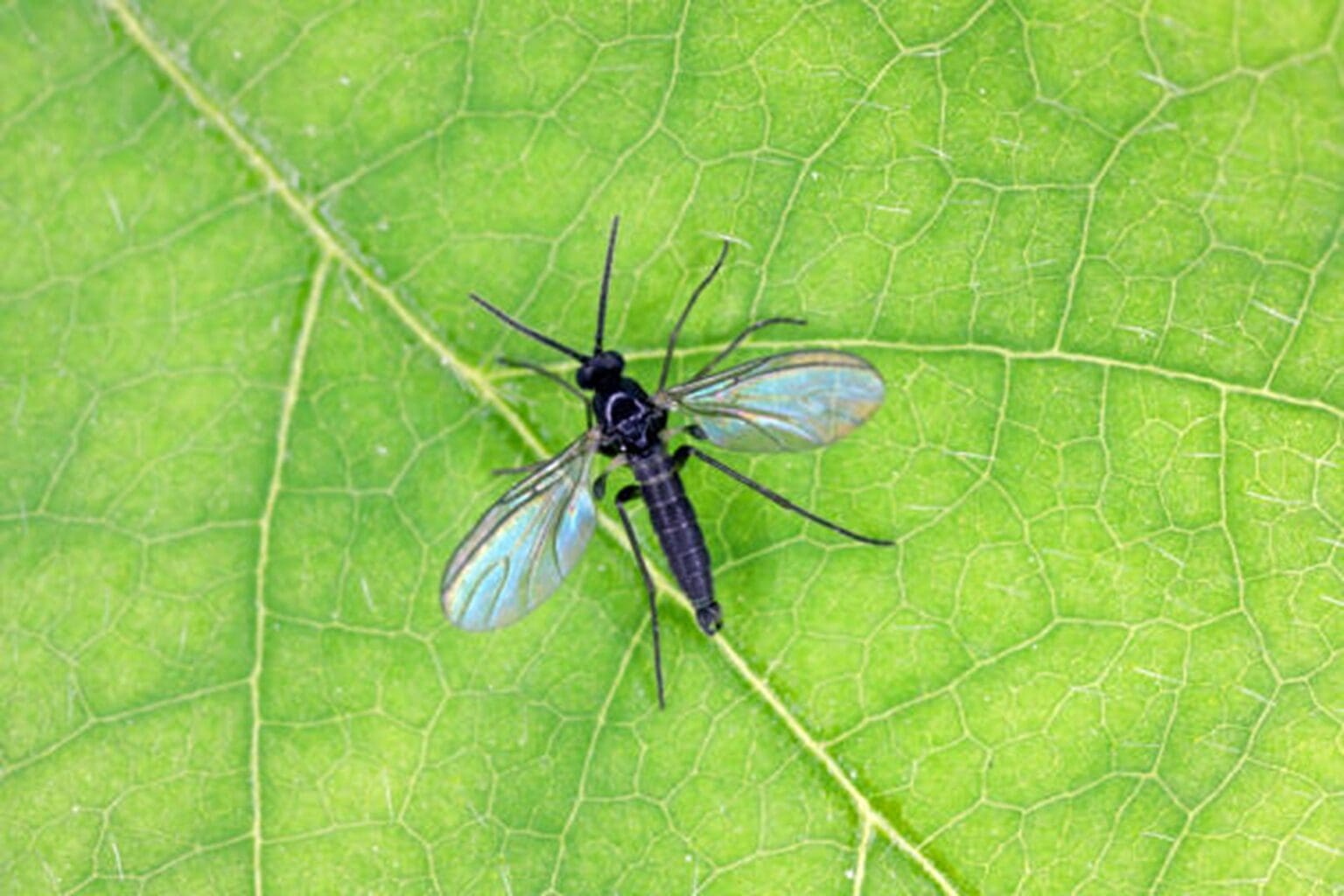
Fungus Gnats:
The dangers of fungus gnats to plants can be very severe, however there are ways to alleviate them. The flying gnats are just the first warning that there is something wrong. You will see signs of stress and yellowing of leaves. If you have a sick plant, fungus gnats can spread it to all your healthy neighboring plant friends. They can also vector several different fungal root rots, including ones called Fusarium and Pythium, and even foliage pathogens like Botrytis. As if that’s not bad enough, fungus gnat larvae make breakfast, lunch and dinner out of your plant roots.
The female will deposit 100-150 eggs on your plant’s soil surface.
These eggs are laid in strings of three to 40 and can hatch within four days of being laid! The emerging larvae are clear to creamy-white and can grow to about 5 ½ millimeters long. They have shiny black head capsules. The larvae feed on tasty root hairs in the upper 1 centimeter of the soil, then work their way up into the plant stem. (They also love to feed on the roots of your newly planted seed, so watch those seed-starting trays in spring!) The larvae feed on highly organic soils, too. After feeding for approximately 14 days, the larva pupates. In about three and a half days, an adult will emerge from the case. The total life cycle takes two to four weeks.
Prevention:
They key is prevention and you can do this two ways: The first is to avoid over-watering your plants. Over-watering, to fungus gnats, is like laying a big steak on the floor in front of a starving dog – they can’t resist. The second way to prevent the problem is to inspect the soil of a plant before bringing one home. Do you see gnats buzzing around it? If so, that’s not a good sign. Put the plant down and just walk away.
Some good monitoring methods can help cut down fungus gnat issues, too. Yellow stick cards (small, yellow cards with sticky adhesive on both sides) often do the trick. These sticky traps can be purchased online, and deter many insects, including flies, are attracted to the yellow color. So, upon seeing the yellow stick card, they’ll mindlessly fly right into it, and SPLAT! The adult fly is stuck. Ta-da! These cards are most effective when placed horizontally near the surface of potting soil.
You can use popsicle sticks or straws to hold the cards, or some come with sticks in the package. Keep in mind, that this control method only traps adults – not the larval stage of fungus gnats.
Applying Neem cake meal to the soil will kill the larvae that is in your soil to restore your plants to normal before too much damage has been done.
Another method is use 3% Hydrogen Peroxide to 4 to 6 parts water as a soil soak. My favorite prevention methods are Spinosad or Azamax as a soil soak. To prevent future attacks, when watering just add 1 tbs Spinosad per 1/2 gallon of water. Do so once every two weeks.
